Earlier this month, legislators along with leaders from local businesses, healthcare organizations and the university toured the School of Nursing for a behind-the-scenes look at Boise State’s cutting-edge nursing education.
The school designed an immersive “Disneyland experience” to share its progress with the public. Each stop in the 12-station tour focused on significant advancements that combat Idaho’s nursing shortage.
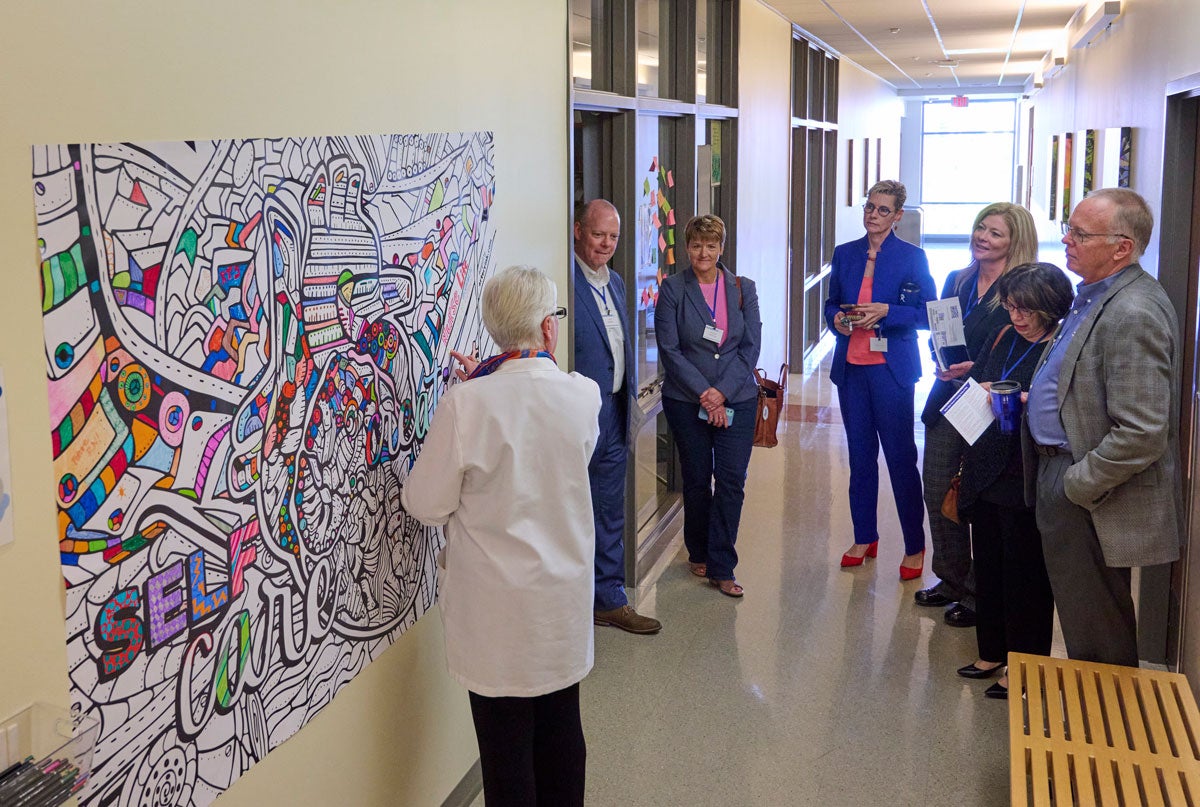
“The field of nursing has been through many challenges in recent years, yet our team decided to rise together to meet them head on,” said Shelle Poole, divisional dean of the School of Nursing.
Participants journeyed through space and time as the school identified past challenges that propelled it toward its present technology and curriculum. The tour also revealed goals for the future that would advance the scope, mission and effectiveness of nursing education at Boise State.
Leading the charge with unique innovations
As the tour began, guests were asked to consider the context of the previous two years, which led to the growth of the school’s self-care focus. Visitors stood in the newly minted self-care room while they learned about the school’s integration of self-care into simulations, curriculum and research.
Guests also walked through a demonstration of the Dedicated Education Unit 2.0, a novel clinical model designed by nurses, for nurses. Visitors got a glimpse of the interdisciplinary training occurring within the College of Health Sciences and how the school’s partnerships with local health systems impact students.
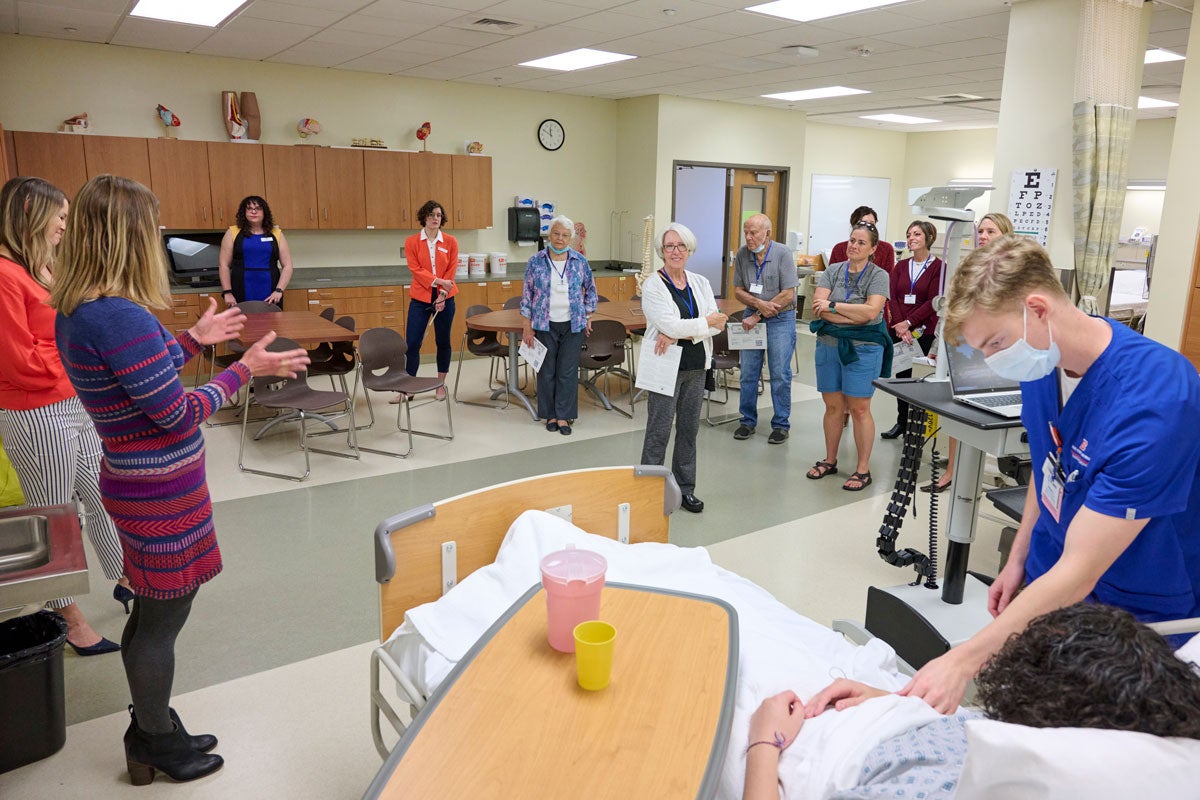
Another station demonstrated how the School of Nursing spearheads education in virtual healthcare and telehealth.
According to Jason Blomquist, a clinical assistant professor and the former director of virtual care and telehealth at St. Luke’s, these are important ways for delivering care, yet very few nurses and students outside of Boise State receive training on the technology and relevant skill set.
“We’re teaching students what’s being used in local healthcare systems, how to use it, and how to interact with patients virtually so they’re fully prepared to enter the workforce,” said Blomquist, the faculty expert at this stop in the tour.
Real world training for work-ready nurses
Several stations in the Simulation Center demonstrated how the Boise State program equips students to be workforce-ready through enhanced realism.
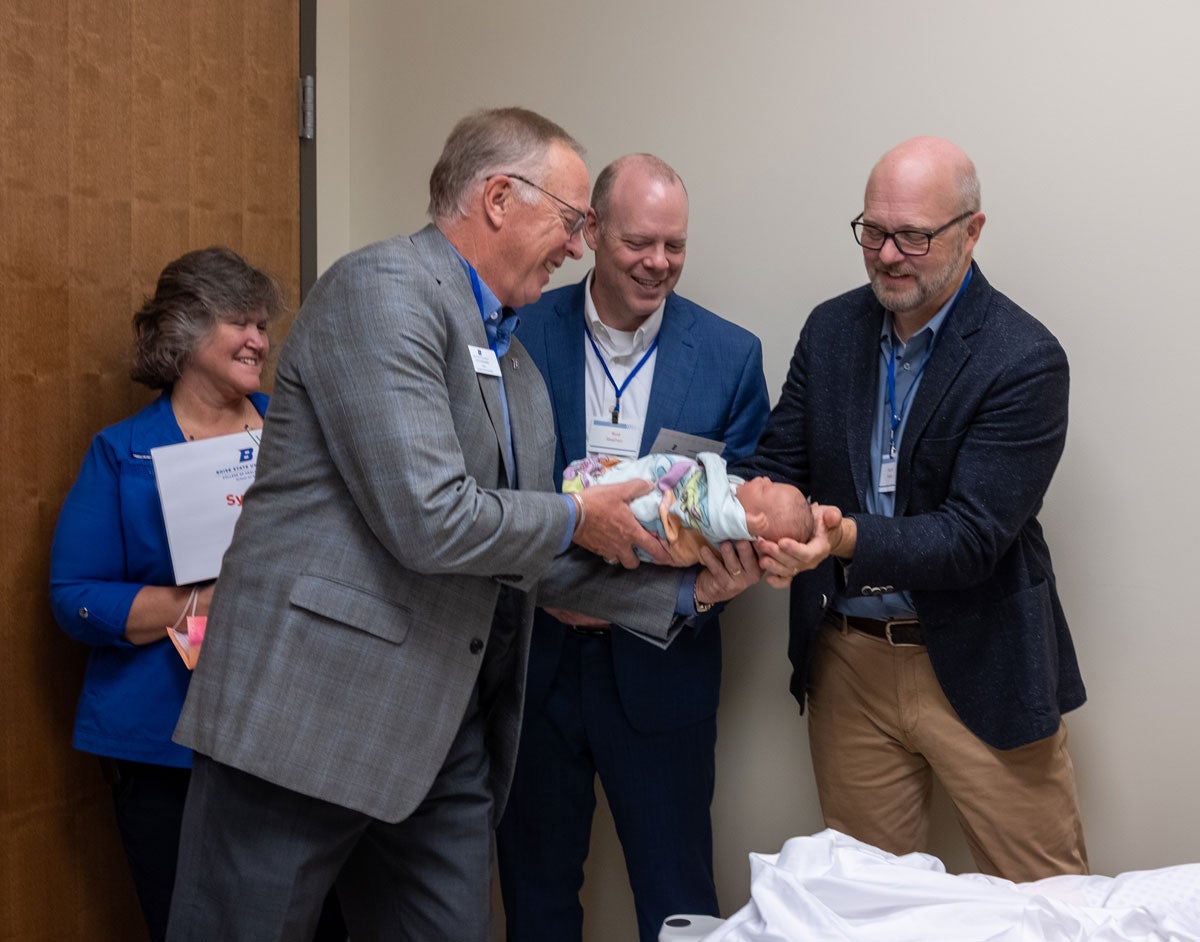
One stop featured Georgia Taylor, a simulated character portrayed by a standardized patient actor (which is about as real as you can get). The Georgia character was developed through the Patient Voice Project, a research effort designed to enhance the reality of simulations by interviewing real Idaho patients and writing scenarios based on their actual experiences.
At another stop, the chance to cradle a baby caught some guests by surprise – no, it wasn’t real, but its seemingly real hair, nails and weight could fool almost anyone.
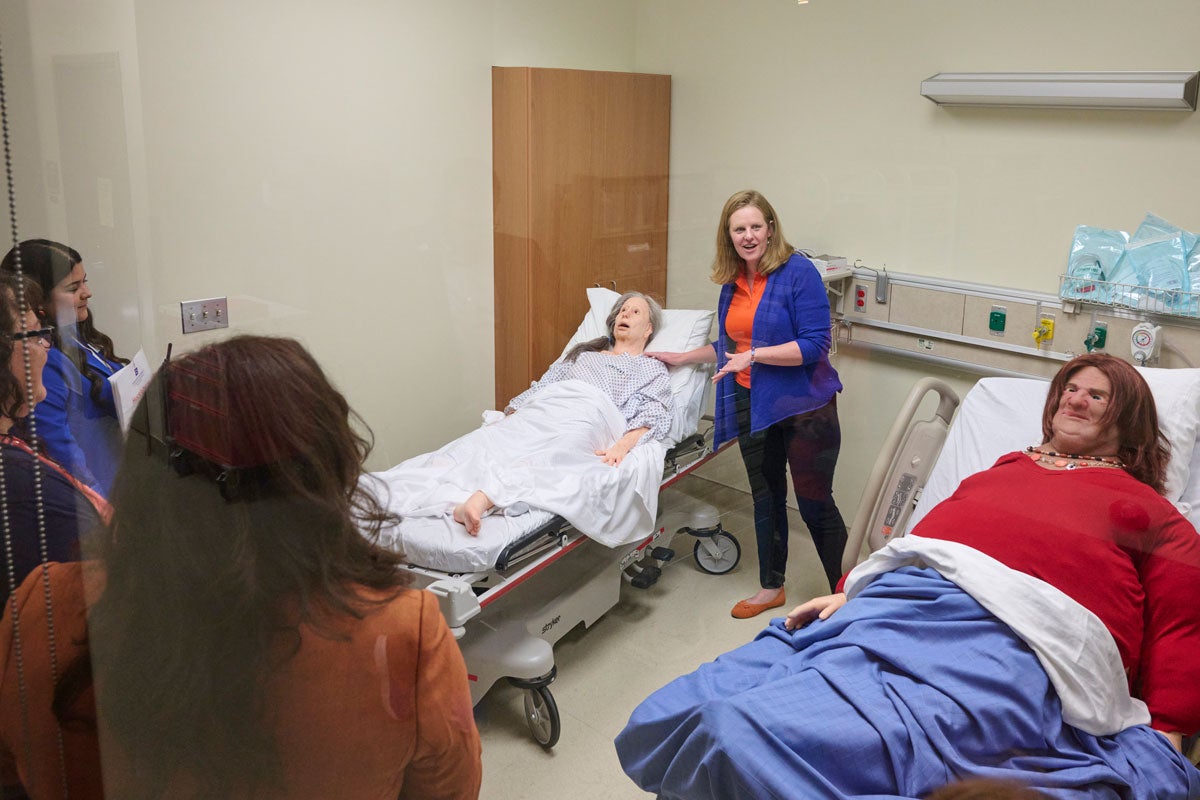
Guests also encountered a high-fidelity manikin with a detectable pulse, blinking eyes and a chest that rises and falls.
Other visually impressive manikins demonstrated how students learn to care for underserved populations, such as a geriatric manikin and a bariatric manikin that was utilized in a weight-bias simulation and study.
Synergy produces positive results
One of the key components of the school’s culture is collaboration, and this all-hands-on-deck event was no exception. From staff tour guides to students demonstrating clinical skills to faculty experts at each tour stop, the school radiated synergy and enthusiasm.
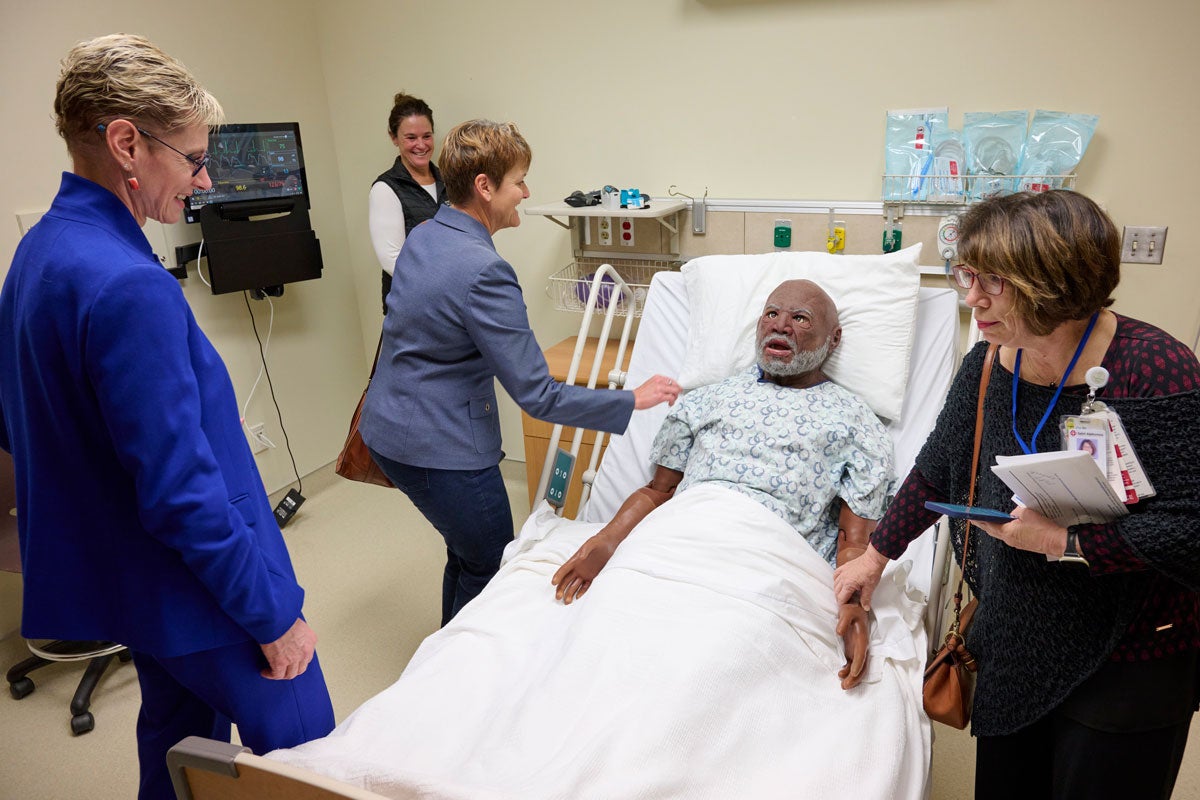
This collective culture of innovation increases students’ workforce readiness in order to impact the rate of new nurse retention.
As the school looks to the future, it hopes to expand educational access throughout the state with more remote learning options that would increase opportunities for rural Idahoans to join the ranks of skilled “Bronco Nurses.”
“I’m so proud of what the School of Nursing is doing because we want to give students a way to imagine themselves going back home and bringing their skills and talents there, so that they can serve the entire state and not just here in the metro area,” said Dr. Marlene Tromp, Boise State’s president. “That’s been one of the big focal points of the whole university.”
Boise State aims to play a key role in solving Idaho’s nursing shortage. With this event, the School of Nursing proved that it has the kind of Blue Turf Thinking to get the job done.